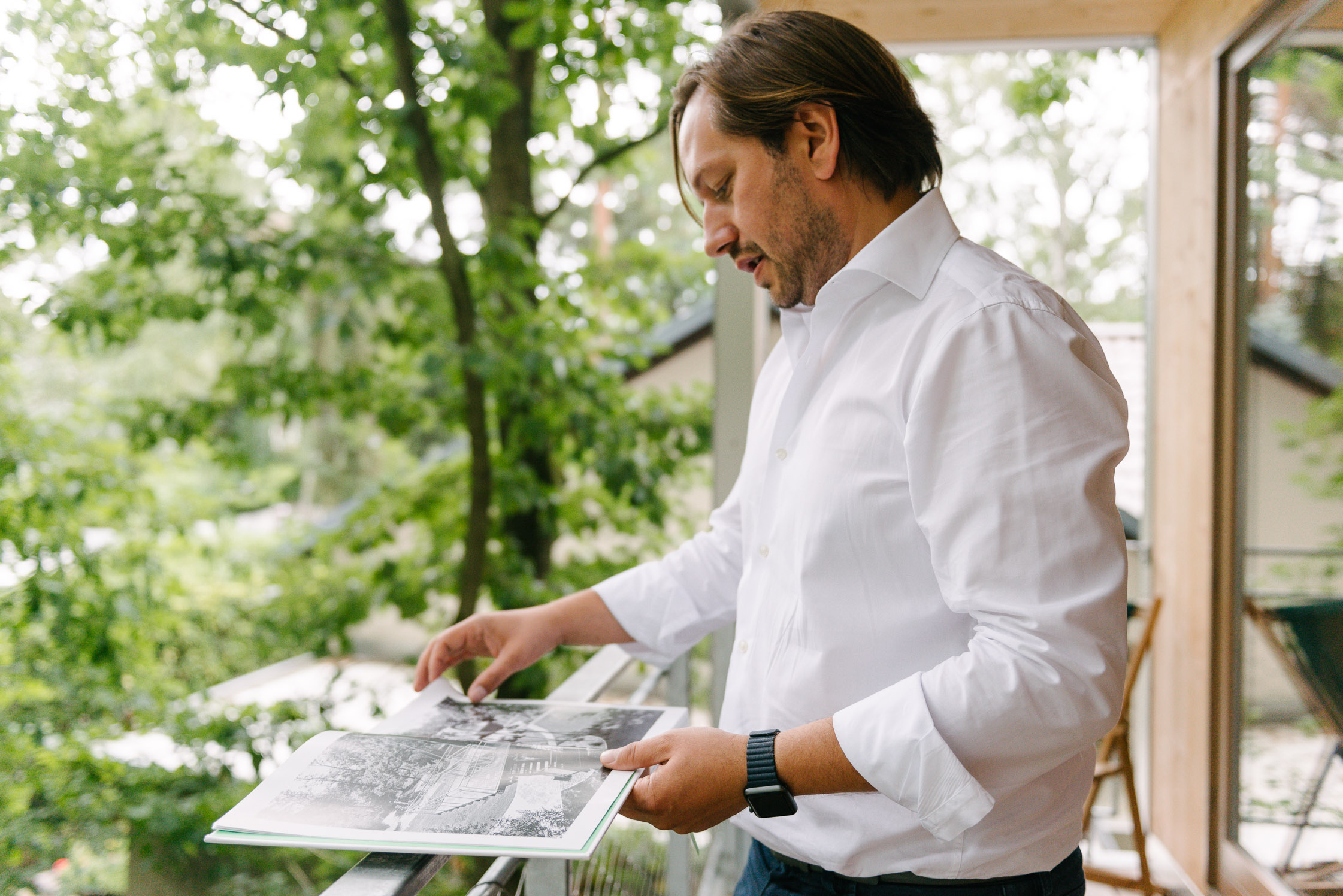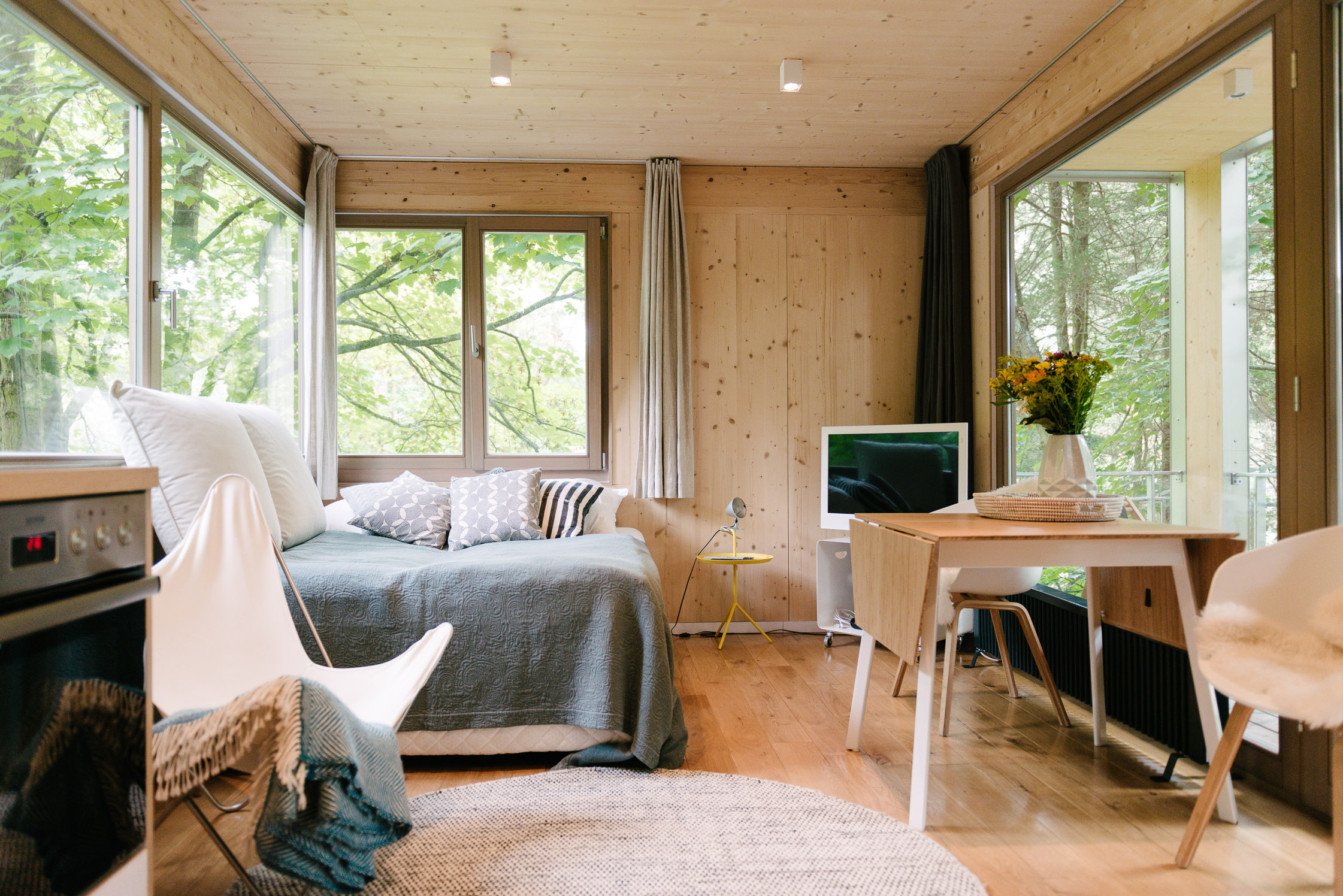Most of us have romantic memories of treehouses. Of the basic versions we built as children, creating secret hideouts where we could feel like grown-ups in our own dreamy places.
Treehouses are secluded spaces of adventure and freedom, of security and coziness. There is a long tradition of treetop habitation in human history: For thousands of years, sturdy tree dwellings have been built above inhospitable ground, offering protection against dangerous animals and floods. While these were built out of necessity, there were also periods when they were introduced purely for pleasure, namely in the Roman era to later in the Renaissance period (when the influential Medici family incorporated them into their gardens near Fiesole and Pratolino) to in the 17th century where in England they grew popular as additions to formal gardens. It’s here you’ll find history today: the oldest surviving treehouse (as they are made of wood, most don’t tend to last beyond 50 years) is one at Pitchford Hall near Shrewsbury, which was first mentioned in 1714. In more modern times, treehouses played their part in political protest and became the setting of environmentalists demonstrations against destruction of natural habitats for economic interests.

In recent years, treehouses have caught the interest of architects who realize the potential in this simple concept. Especially amongst those who embrace sustainability and craftsmanship, interest in these new spaces which promise an intimate experience of nature. Now it’s possible to build treehouses that retain the associations of adventure, romance, privacy, and a closeness to nature, while offering the comfort we are used to in our city apartments. A place for dreaming and contemplation—and boutique hotels are quickly adapting to this new idea, too.
“I didn’t have a treehouse when I was a child, but I like trees and small experimental spaces. So in the beginning I just wanted to build my own treehouse.”
However, even for treehouse experts like architect Andreas Wenning, it isn’t easy to build around or within the trees—and it’s not made any easier in a country particularly known for its bureaucracy. The Bremen-based architect founded his ‘baumhaus’ practice in 2003 which solely concentrates on building treehouses all over the world. “I didn’t have a treehouse when I was a child, but I like trees and small experimental spaces. So in the beginning I just wanted to build my own treehouse,” says Andreas. “It was a gap in the market which fit me perfectly.”





As for the clients, there is either a desire to build a contrasting space or one that blends in with the natural surroundings. These new treehouses range from firm hut-like constructions with simple finishings to futuristically designed capsules with luxurious interiors. A lot of the build depends on static requirements, sometimes the treehouses hang in the branches, sometimes they stand on slender supports. Due to building legislation, especially in stringently bureaucratic countries, they are mostly not actually built on a tree, but around a tree. It is a difficult process that starts with a tree survey to ensure the tree of choice is alive and in a safe state. To build around this complex organism, many factors need to be taken into account. “Building laws can sometimes make the job very complicated, but usually the most challenging part is finding a logical structure and grid that fits with an organic system such as trees.”
Technical drawings of the treehouses by architect Andreas Wenning
Kolja Stegemann is one of these people fascinated with treehouses. And we are not surprised. When we visited him on his houseboat could tell he aspires to create the perfect space in a natural surrounding.
His Urban Treehouses were a joint project with his grandfather. Kolja convinced him to put an unused family property to use for the unique idea. They commissioned architect Andreas Wenning to build two treehouses on their premises with direct view on Berlin’s Schlachtensee lake. The treehouses were built from patterned stainless steel as a reflection of the nature surrounding them. Opened in 2014, the Urban Treehouses are available to members who pay a monthly fee and can enjoy the treehouses throughout the year. The idea is to bring people together just the way they did as guesthouses 50 years back in time. “Treehouses don’t need to be basic, they don’t have to equate austerity,” he says. “On the contrary: they should stand for well-being, coming home, being able to really relax.”








A selection of treehouses designed by architect Andreas Wenning



Thank you, Kolja, for taking us around the beautiful Urban Treehouses. If you would like to find out more about them and the membership options in order to experience some treehouse time yourself, check out the Urban Treehouses website . Here you can delve into architect Andreas Wenning’s work and if you are keen on finding out more on the history of treehouses and exciting new projects you might want to look at his book Treehouses – Small Spaces in Nature.
Text: Lilli Heinemann
Photography: Daniel Müller












